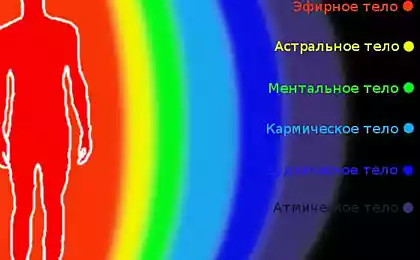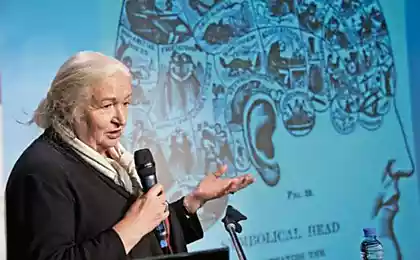609
The effect of the carpenter: muscle memory exists
All human movement begins in the human brain in the form of a mental image, and then reproduced in the form of muscle contraction and joint function. Even if it seems to us that many of the movements we are not aware of and produce on autopilot, this idea, this vision still exists.
First, this effect was formulated by William carpenter in 1852, and subsequently received confirmation in the face of people do not last in the field of physiology, Pavlov and Freud.
The method has been hundreds of scientific evidence and has been used in any field where high precision of movement.
The effect of the carpenter is a pattern that any perception or representation gives rise to a tendency to a similar perception or view. Put simply, the thought or idea born in the brain, causing a motor reaction, which the brain perceives as real. The effect of carpenter known in medicine asthe ideomotor effect (and the law) and ideomotor training, we'll see.
For example, if you are a musician, guitar is not around, and you have a ten-trip train, can you imagine your guitar in your hands (it is desirable to move your fingers) and practice. One condition — you need to know the music and all the finger movements that are required. Motor and muscle memory exists, it is well-known athletes, musicians and dancers.
Also, this phenomenon is known as "Clever Hans Effect". This is the name of the horse that became world famous in the early 20th century that supposedly possess the highest intelligence. She could solve serious mathematical problems and tapped a hoof the correct answer. In 1907 Oskar Pfungst conducted a study and came to the conclusion that the horse reads the signals from the behavior of his master and in fact did not possess any intelligence.
So how can you use the effect of the carpenter?
To begin, consider the question,as it does not need to use.
The negative consequences of the effect of the carpenter
For example, people have the tendency to accidents, if he has already experienced one such. Freud called it "traumatic neurosis" is a consequence of the fixation of the human body at the time of the event. A person constantly remembers the accident, reproduces experiences in great detail. Thus the brain sees no difference between past and present, he believes that people in the here and now gets in the same situation. And all this leads to acquired helplessness.
So the effect of the carpenter manifests itself in the sphere of false actions. One who spends a long time thinking that he'll make a mistake or will be the object of an accident is influenced by his own fear and become a victim of my own anxiety.
It should say that negative thoughts and thoughts about their actions — not the same thing. The effect of the carpenter relates to the physiology, so-called muscle memory, and pessimism just kills the mood and psychological atmosphere in man.
Ideomotor training
Why are some players capable of incredible feints and deceptive movements, and others don't? The second just can't imagine in my head this trick. It's ridiculously simple consideration, few people are clearly aware of. In any training it is extremely important to not just see the trick and try to repeat it, it must first imagine in your head. It is the brain gives orders to the muscles, and not Vice versa, and if you don't know what to do, how it will make muscle?
How to play the melody on guitar, even if you know all the notes in theory but don't understand how to move your fingers? The brain does not give a clear command to your fingers, and your fingers randomly banging on the strings. The thought going something like this: "So, now I have this finger... somewhere... but this... this finger need... as if...".

If you can't imagine how to raise your hand up, you'll never rise, because you don't know that was possible.
It is also important to understand how difficult it is to unlearn. When the athlete 10 thousand times repeated one wrong move would require an enormous amount of effort to retrain him. And to relearn it first, that is mental representations, and only then physical action. In the brain's synapses is one and the same team and it's not even well-trodden path, it is paved with pavement that must be removed. When we talk about muscle memory, we must understand some of the arbitrariness of this notion, because in fact it is the mechanism of transmission of nerve impulses in the brain and nervous system.
Talked about this and Pavlov: "When you think about a certain move, you could not help it produce."
If we understand this law, then it becomes clearer.
There are some very important points.
First: the more accurate mental image, the more precise the movement. Therefore it is very important to see how this action produces professional — on video or in front of you and try to imagine in my head.
Second: your body has to fit your mental images. That is, if your joints and muscles will not be ready to play mental movement, it can even lead to injury, at best a waste of time.
Third: the quality of communication between the brain and the body. This is achieved as a result of hard workouts. It is extremely important to present yourself not from outside (as a spectator), but in the form of first person.
Fourth: you should start with slow movements, subsequently alternating slow and fast.
Fifth: sharpen your every move to perfection. If you learn it not at the highest level, then you will spend a lot of time to relearn.
Also interesting: in less than 100 years: the return of the theory of the unconscious Sigmund Freud
Cranial breathing — a surprising discovery by William garner Sutherland
The carpenter effect has a scientific basis and should not be construed as a theory. But it will certainly be supplemented and improved, taking into account the development of science and medicine throughout the world. published
P. S. And remember, just changing your mind — together we change the world! ©
Source: 4brain.ru/blog/%D1%8D%D1%84%D1%84%D0%B5%D0%BA%D1%82-%D0%BA%D0%B0%D1%80%D0%BF%D0%B5%D0%BD%D1%82%D0%B5%D1%80%D0%B0/
First, this effect was formulated by William carpenter in 1852, and subsequently received confirmation in the face of people do not last in the field of physiology, Pavlov and Freud.
The method has been hundreds of scientific evidence and has been used in any field where high precision of movement.
The effect of the carpenter is a pattern that any perception or representation gives rise to a tendency to a similar perception or view. Put simply, the thought or idea born in the brain, causing a motor reaction, which the brain perceives as real. The effect of carpenter known in medicine asthe ideomotor effect (and the law) and ideomotor training, we'll see.
For example, if you are a musician, guitar is not around, and you have a ten-trip train, can you imagine your guitar in your hands (it is desirable to move your fingers) and practice. One condition — you need to know the music and all the finger movements that are required. Motor and muscle memory exists, it is well-known athletes, musicians and dancers.
Also, this phenomenon is known as "Clever Hans Effect". This is the name of the horse that became world famous in the early 20th century that supposedly possess the highest intelligence. She could solve serious mathematical problems and tapped a hoof the correct answer. In 1907 Oskar Pfungst conducted a study and came to the conclusion that the horse reads the signals from the behavior of his master and in fact did not possess any intelligence.
So how can you use the effect of the carpenter?
To begin, consider the question,as it does not need to use.
The negative consequences of the effect of the carpenter
For example, people have the tendency to accidents, if he has already experienced one such. Freud called it "traumatic neurosis" is a consequence of the fixation of the human body at the time of the event. A person constantly remembers the accident, reproduces experiences in great detail. Thus the brain sees no difference between past and present, he believes that people in the here and now gets in the same situation. And all this leads to acquired helplessness.
So the effect of the carpenter manifests itself in the sphere of false actions. One who spends a long time thinking that he'll make a mistake or will be the object of an accident is influenced by his own fear and become a victim of my own anxiety.
It should say that negative thoughts and thoughts about their actions — not the same thing. The effect of the carpenter relates to the physiology, so-called muscle memory, and pessimism just kills the mood and psychological atmosphere in man.
Ideomotor training
Why are some players capable of incredible feints and deceptive movements, and others don't? The second just can't imagine in my head this trick. It's ridiculously simple consideration, few people are clearly aware of. In any training it is extremely important to not just see the trick and try to repeat it, it must first imagine in your head. It is the brain gives orders to the muscles, and not Vice versa, and if you don't know what to do, how it will make muscle?
How to play the melody on guitar, even if you know all the notes in theory but don't understand how to move your fingers? The brain does not give a clear command to your fingers, and your fingers randomly banging on the strings. The thought going something like this: "So, now I have this finger... somewhere... but this... this finger need... as if...".

If you can't imagine how to raise your hand up, you'll never rise, because you don't know that was possible.
It is also important to understand how difficult it is to unlearn. When the athlete 10 thousand times repeated one wrong move would require an enormous amount of effort to retrain him. And to relearn it first, that is mental representations, and only then physical action. In the brain's synapses is one and the same team and it's not even well-trodden path, it is paved with pavement that must be removed. When we talk about muscle memory, we must understand some of the arbitrariness of this notion, because in fact it is the mechanism of transmission of nerve impulses in the brain and nervous system.
Talked about this and Pavlov: "When you think about a certain move, you could not help it produce."
If we understand this law, then it becomes clearer.
There are some very important points.
First: the more accurate mental image, the more precise the movement. Therefore it is very important to see how this action produces professional — on video or in front of you and try to imagine in my head.
Second: your body has to fit your mental images. That is, if your joints and muscles will not be ready to play mental movement, it can even lead to injury, at best a waste of time.
Third: the quality of communication between the brain and the body. This is achieved as a result of hard workouts. It is extremely important to present yourself not from outside (as a spectator), but in the form of first person.
Fourth: you should start with slow movements, subsequently alternating slow and fast.
Fifth: sharpen your every move to perfection. If you learn it not at the highest level, then you will spend a lot of time to relearn.
Also interesting: in less than 100 years: the return of the theory of the unconscious Sigmund Freud
Cranial breathing — a surprising discovery by William garner Sutherland
The carpenter effect has a scientific basis and should not be construed as a theory. But it will certainly be supplemented and improved, taking into account the development of science and medicine throughout the world. published
P. S. And remember, just changing your mind — together we change the world! ©
Source: 4brain.ru/blog/%D1%8D%D1%84%D1%84%D0%B5%D0%BA%D1%82-%D0%BA%D0%B0%D1%80%D0%BF%D0%B5%D0%BD%D1%82%D0%B5%D1%80%D0%B0/























